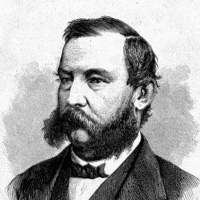Albert Camus finds all lives to be absurd.
In his masterful The Myth of Sisyphus, Camus uses this tragic, absurd, hero to illustrate the absurdity of every day life. Sisyphus’ ceaseless labor, rolling a rock to the top of a mountain, is futile and hopeless, and yet – “the workman of today works everyday in his life at the same tasks, and his fate is no less absurd.”
This is a bold claim. Are we each, indeed, as absurd as Sisyphus?
As an initial reaction, one might grope first towards the long view. If you find, as Camus does, that life itself is inherently meaningless; that there is no greater, higher, or broader purpose, then, perhaps, indeed, you may find, too, the peculiarities of daily life to be absurd.
In this sense, all of life, all choices of action, are absurd. Facing the inescapable fate of oblivion, we too find our “whole being is exerted toward accomplishing nothing.”
Of course, one may take the merrier view that such absurdity is not our undeniable fate; that life does have purpose after all.
Much of Camus’ argument seeks to counter this claim; such hope in higher purpose is the hasty conviction of fools. There is little doubt that hope is comforting; but it ultimately betrays the greater cause of consciousness. The tragedy of Sisyphus, the tragedy of our lives, comes from our consciousness, Camus argues, but this consciousness is also our greatest strength.
For Sisyphus, Camus’ conclusion is clear: “The lucidity that was to constitute his torture at the same time crowns his victory. There is no fate that can not be surmounted by scorn.”
Thus he urges each of us to be conscious of our absurdity; to embrace the meaninglessness which pursues us as we plod through our daily lives; to scorn the idols which proffer their empty hope; and to proudly find ourselves stronger than our rock.
Yet, amidst his towering prose, Camus fails to confront a core claim: Are we each, fundamentally, as absurd as Sisyphus?
The tragedy of Sisyphus lies not only in his consciousness, not only in his total exertion towards nothing. Rather, his tragedy lies in the dreariness of his setting; in the repetition of his existence.
Consider Camus’ account of the sins which earned Sisyphus his doom. Not only was he found to have a “certain levity in regard to the gods,” his real sin was to live. Following his death, Sisyphus obtained permission from Pluto “to return to earth in order to chastise his wife” who had disobeyed his final order to “cast his unburied body into the middle of the public square.”
But once returning to life, Sisyphus refused to give it up. “When he had seen again the face of this world, enjoyed water and sun, warm stones and the sea, he no longer wanted to go back to the infernal darkness. Recalls, signs of anger, warnings were of no avail. Many years more he lived facing the curve of the gulf, the sparkling sea, and the smiles of earth. A decree of the gods was necessary. Mercury came and seized the impudent man by the collar and, snatching him from his joys, lead him forcibly back to the underworld, where his rock was ready for him.”
This was Sisyphus’ crime. He lived too much; experienced too much. The punishment of the gods ensured not only his futile labor but his continued existence in a state of non-experience. All he would ever know again was his rock and his mountain; his mountain and his rock.
In this story, we are not, perhaps, the laborer, working everyday in his life at the same tasks. Rather, we Sisyphus, returned from the underworld. Unabashedly enjoying the beauty and experience that comes with every miraculous day.
Or, perhaps, this is exactly what the story is supposed to remind us. We can live with the vibrancy of Sisyphus on earth or share in his quiet scorn from the underworld. We can work on our big, important, projects, laboring ceaselessly towards some absurd end – or we can laugh and take whatever life throws at us; loving the harsh and extraordinary experience of simply being alive.
In the end, it doesn’t matter which fate we choose. Indeed, this is Camus’ most remarkable lesson: our fates are our own. No darkness or decree can strip us of that. We are each the master of our days. Fully free to contemplate “that series of unrelated actions” which become our fate. And thus, like Sisyphus, despite our burdens, despite our labors, we too may conclude that all is well.


 Matt Haikin (lead author), Savita Bailur, Evangelia Berdou, Jonathan Dudding, Cláudia Abreu Lopes, and Martin Belcher.
Matt Haikin (lead author), Savita Bailur, Evangelia Berdou, Jonathan Dudding, Cláudia Abreu Lopes, and Martin Belcher.


